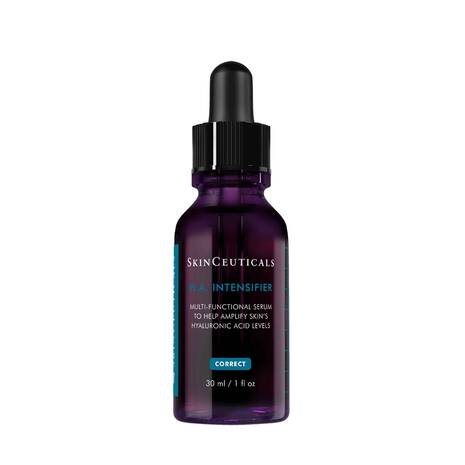Dry, chapped lips can be an uncomfortable nuisance. Whether it's due to the harsh winter weather, excessive sun exposure, dry air, dehydration, or other factors, understanding the causes of chapped lips is the first step toward finding relief.
The skin on our lips possesses specific characteristics that make it particularly vulnerable to chapping and dryness.
Firstly, the stratum corneum, the outermost layer of the skin responsible for providing protection and preventing dehydration, is notably thinner on the lips compared to other areas of the body. This thinner stratum corneum compromises the lip's natural barrier function, making it more susceptible to environmental factors that can lead to trans epidermal water loss.1
The contrast between thick and thin skin layers plays a role in determining the lip's susceptibility to dryness and the effectiveness of its protective mechanisms. Moreover, the lip skin lacks the keratinisation that characterises skin in other more robust areas, such as the palms or soles of the feet. This non-keratinised epithelium means that the skin on the lips is directly exposed to the external environment, further increasing its vulnerability to dry conditions, UV radiation, and irritants.
Adding to the challenge, lips rely primarily on saliva as their sole source of moisture as they don’t produce sebum like most other skin on the body. Given these unique characteristics, it becomes clear why the skin on our lips requires extra care in terms of hydration and moisture to prevent chapping and maintain their soft and supple condition.
Signs and Symptoms of Chapped Lips
Chapped lips, also known as cheilitis, can be identified by a range of uncomfortable sensations and visible signs. At first, you may feel your lips lose their plumpness and become parched or rough to the touch. In a mild case of chapped lips, you may experience an increased sense of tightness in the lips as if they are about to crack. As the case of chapped lips grows more severe, this tightness can progress to outright painful cracked lips, which may worsen with movement or exposure to certain conditions. The skin on the lips may then peel or flake off as it attempts to repair itself, sometimes causing discomfort or bleeding. As a response to these symptoms, your lips may become red, irritated, and swollen as the body responds with inflammation. Throughout this process, chapped lips can be accompanied by a burning or stinging sensation, particularly when exposed to irritants, extreme temperatures, or dry climates.
Visually, you can distinguish chapped lips by several characteristics. First, the skin may appear irregular or uneven. This textured appearance is due to the drying and flaking associated with chapping. In particular, flaking results when the dry skin shrinks and separates, beginning the body's natural healing process to replace the damaged or dead skin cells. Also caused by the shrinking of skin as it dries, lines and cracks may appear on the surface of the lips. In particularly severe cases of dry lips, the cracks may lead to bleeding and compromise the skin barrier. Finally, dry lips may also present with white spots that are distinct from the dead skin associated with flaking. These white spots can result from particularly damaged skin that has formed an open sore, with a white spot in the centre due to a lack of blood flow. Since chapped lips can create an environment where fungi or bacteria can thrive, in some cases, white spots may indicate the presence of a fungal infection, such as oral thrush or angular cheilitis.
Causes of Chapped Lips
Chapped lips can result from a combination of factors, and understanding these causes is crucial for effective prevention and treatment.
Here are some common dry lip causes.
1. Environmental Factors: Extreme cold, dry air and strong winds can strip the natural moisture from your lips through trans epidermal water loss, leading to chapping.
2. Sun Exposure: Overexposure to the sun's ultraviolet (UV) rays can break down collagen and damage the delicate skin of the lips, causing them to become dry and vulnerable to chapping.
3. Dehydration: Not drinking enough water can lead to general dehydration, which can decrease collagen synthesis and manifest as dry and chapped lips.
4. Lip-Licking: Habitual licking of the lips can temporarily moisten them, but the enzymes in saliva can also break down the protective barrier on your lips, leading to increased dryness.
5. Habitual Biting: Biting the lips can damage the delicate skin, causing cracks and worsening chapping.
6. Harsh Skincare Products: Some toothpaste brands contain ingredients that can irritate the lips, and certain lip care products may contain allergens or irritants.
7. Allergies: Allergic reactions to lip products, such as lip balms, lipsticks, or even food allergens, can lead to chapped lips through contact dermatitis.
8. Medication Side Effects: Some medications, including certain acne treatments and retinoids, may lead to dry and chapped lips as a side effect.
9. Medical Conditions: Certain medical conditions, such as eczema, psoriasis, or fungal infections, can affect the lips, causing chapping.
How Long Do Chapped Lips Last?
The duration of chapped lips can vary from person to person and depends on the underlying causes, severity, and the effectiveness of treatment and prevention measures. However, in most cases, mild chapping may resolve within a few days to a week with proper care & hydration. Chapped lips of moderate severity may take up to two weeks to heal, especially if they result from harsh environmental conditions. On the more alarming side, highly severe cases, like open wounds or infections, may persist for several weeks or more, requiring treatment and potential medical attention if complications arise. It is thus essential to address the root causes of chapped lips to prevent them from recurring and becoming a chronic issue.
Prevention of Dry Lips
Preventing chapped lips is often easier than treating them. Here are some effective strategies to keep your lips soft, supple, and well-hydrated:
Drink Plenty of Water: Staying well-hydrated helps maintain moisture throughout your body, including your lips.
Use Lip Balms: Apply a high-quality, hydrating!
Lip balm with SPF to protect your lips from UV damage and maintain moisture.
Avoid Irritating Ingredients: Learn which lip balm ingredients to avoid and choose a lip product free of irritants, fragrances, and allergens.
Moisturise Before Bed: Apply a thick layer of lip balm or a natural lip moisturiser before bed to prevent overnight moisture loss.
Limit Lip Licking: Be mindful of the habit of licking your lips, as this can exacerbate dryness.
Avoid Biting: Avoid biting or picking at your lips, which can cause damage and worsen chapping.
Protect Lips in Harsh Weather: In cold or windy conditions, use a scarf or face mask to shield your lips from harsh weather.
Eat a Balanced Diet:
Consume foods for skin repair that are rich in vitamins, minerals, and essential fatty acids to support overall skin health, including your lips.
SkinCeuticals Antioxidant Lip Repair is a restorative emollient that can help to replenish your lips with volume and refine their appearance. Formulated with an antioxidant complex of silymarin and vitamin E, hyaluronic acid, hydroxyethyl urea and allantoin, it effectively protects the lips from environmental damage while replenishing lost moisture and relieving immediate feelings of dryness.
Pro Tip -
Additionally, SkinCeuticals H.A. Intensifier is a powerful corrective serum that in addition to be used on face and neck can also target lines around the mouth and lips. It helps to restore the skin’s natural levels of hyaluronic acid (which are also responsible for maintaining the skin’s plump appearance) with a formula clinically proven to increase hyaluronic acid levels by up to 30%*. Apply before bed after cleansing for an intensive yet gentle overnight treatment.

SkinCeuticals Antioxidant Lip Repair 10ml


















































